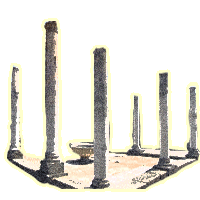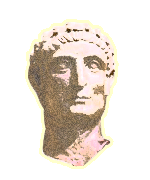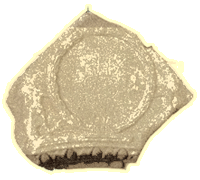 |
||

M E D I A N A |
||
|
Mediana is an important archeological site from the late Roman period located in the eastern suburb of the Serbian city of Nis. It represents a luxurious residence with a highly organized economy. Excavatations have revealed a villa with peristyle, thermae, granary and water tower. The residence dates to the reign of Constantine the Great 306 to 337. Although Roman artefacts can be found scattered all over the area of present-day Nis Mediana represents the best-preserved part of Roman Naissus Constantine the Great (280 - 337) was born and raised in Naissus. He erected a majestic residence in one of the luxurious suburbs of ancient Naissus, where he often resided and attended to state affairs. Historical records testify it was in Naissus that he passed several laws - in 315, 319, 324, and 334. After Constantine's death in 337, the imperial residence in Mediana was used by several other emperors, either as place of rest on their long journeys or during preparations for war. Thus, Constantine's sons, Constantius II and Constans, stayed in Naissus in the winter of 340, for they signed an edict there. Later on, Constans used it as a temporary residence. According to the Hieronimus' Chronicles, after Vetranio, commander of the Danubian army, hsd been proclaimed emperor in Sirmium, he surrendered the insignia of imperial power to Constantius II in Naissus, in 350. Julian the Apostate unexpectedly spent some time in Naissus on his expedition against Constantius II, at the end of year 361. During his two-month stay, Julian wrote from Naissus long epistles to the Senate, to Athens, Corinth and other Greek towns, explaining his policy and seeking support. Valentinian's stay in Naissus in 364 is attested by several imperial edicts. Naissus was the native town of another Roman emperor ... Continue |
... - Constantius III (year 425), husband of Galla Placidia, father of Valentinian III (according to Olympiodorus of Thebes). The residence was abandoned after the city of Naissus was devastated by Attila's hordes in 442. The residence was erected on flat terrain, on an area which covers over 400,000 square metres, on a high bank, some distance from the river, at the foot of the hills which frame the Nišava river valley, near a thermal water source. There was a street in the east-west direction which passed on the south side of the villa with peristyle and the granary located 150 meters from it. From this street it was possible to approach these buildings. The central area was occupied by the villa with its open peristyle, nymphaeum and thermae; to the west of the villa was the granary, and somewhat to the north a spacious building with octagonal and circular rooms. To the south of the villa are the remains of several villas and functional service structures. What strikes the eye is that the luxurious buildings of solid material with columns, decorated with marble facing, mosaics and frescoes, are concentrated mainly around the central villa and its peristyle, while the economic buildings are located to the west of the granary towards Naissus. The villa occupies the central position in Mediana. The villa comprises an area of about 6.000 m˛ (98,6 x 63 m) and included thermae on the west side and a smaller nymphaeum on the east side. The mosaic floors that covered the whole of the peristyle porch (450 m˛) and the audience room have been well preserved. The porch mosaics are geometrical. Figural mosaics are at the entrance of the audience room. The middle part of the audience hall is covered with a broad rectangular field with a geometric pattern, done in the manner of the finest artist. The central part of this structure is a hexagon (3,2 m on the side) with a fountain in the middle, also in the form of hexagon. The lead pipe, used to supply water, can be seen in the middle of the fountain. A water tower (castellum aquae) was ordinarily found at the end of each Roman aqueduct. Water was supplied from this reservoir to the wells and fountains, basins, thermae and maybe the irrigation canals. TOP |
|
  
|
||











